29+ Smart Goals Examples to Download
In today’s fast-paced and competitive professional landscape, setting clear and achievable goals is essential for personal growth and career advancement. Among the many goal-setting methodologies, SMART goals stand out as a highly effective approach for ensuring that your aspirations are well-defined and attainable. Whether you’re aiming to enhance your skills, capitalize on your strengths, or conquer your weaknesses, smart goals templates provide an easy-to-follow format for creating a structured framework to guide you on your journey to success.
1. Smart Goals for Employee Example
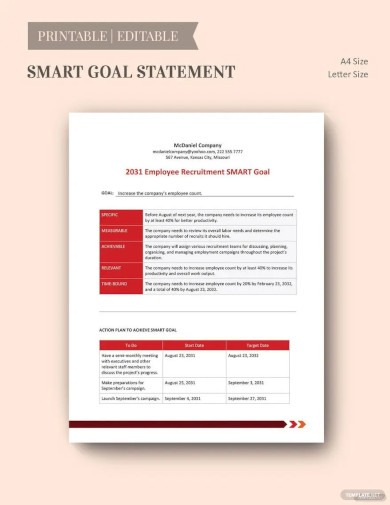
2. Smart Business Goals Example
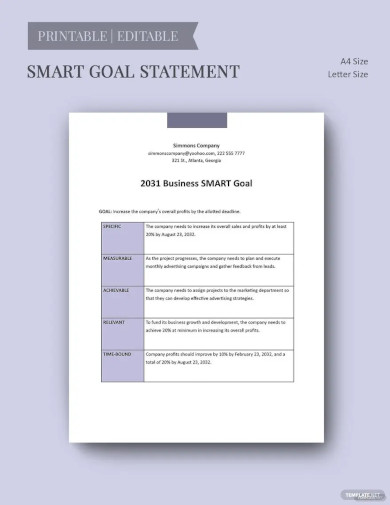
3. Leadership Smart Goals Example
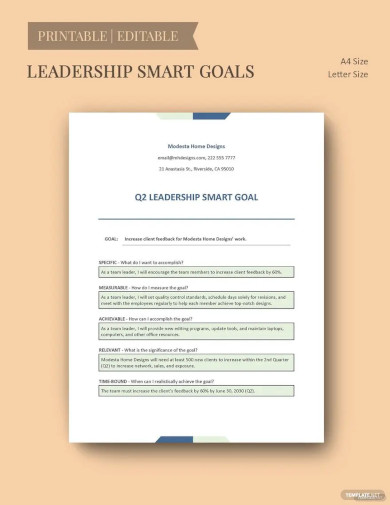
4. Smart Goals Worksheet Example
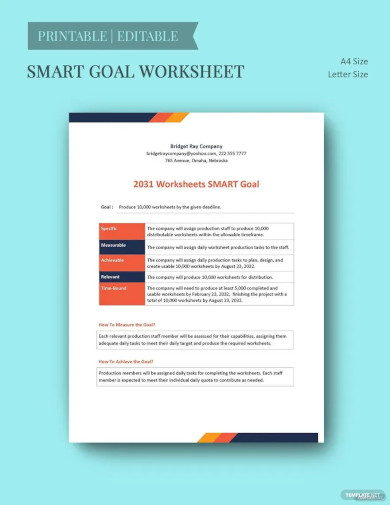
5. Smart Goals Setting Example
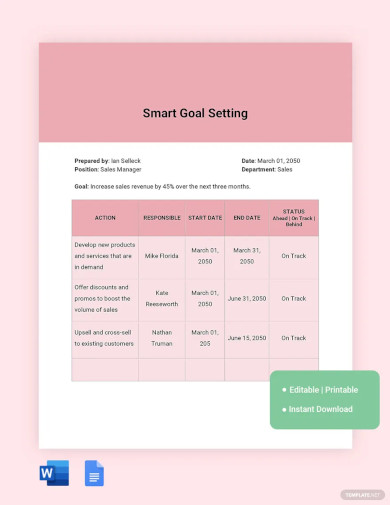
6. Smart Goals for Work Template
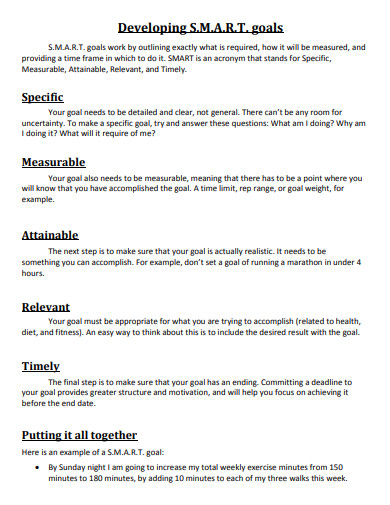
ohsu.edu
7. Employee Smart Goals Example
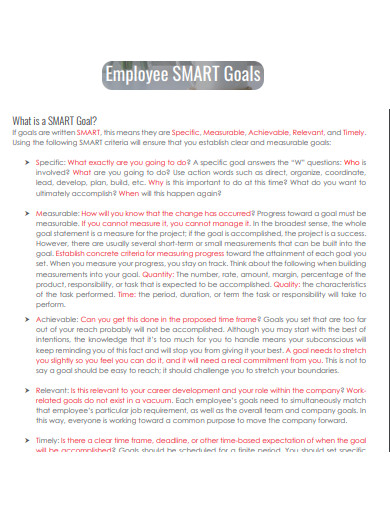
hrknowledge.com
8. Administrative Assistant Smart Goals Example
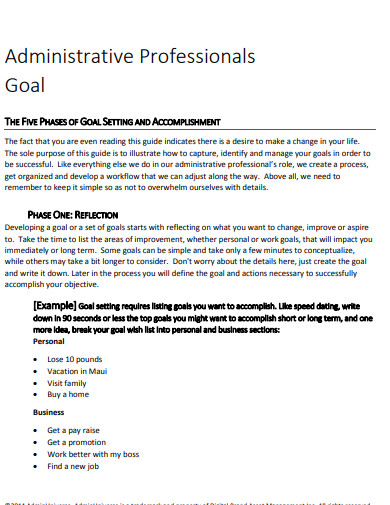
adminuniverse.com
9. Professional Goals Example

collab.its.virginia.edu
10. Long term Goals Example
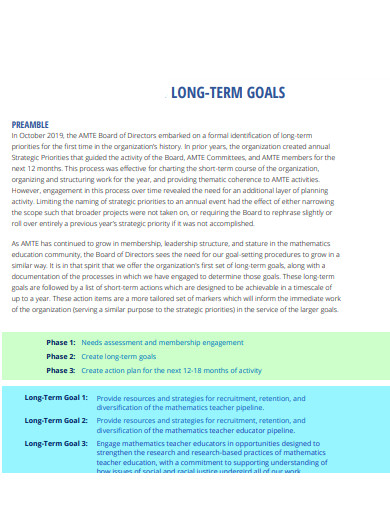
amte.net
11. Goal Setting Example

umanitoba.ca
12. Employee Goal Plan Example
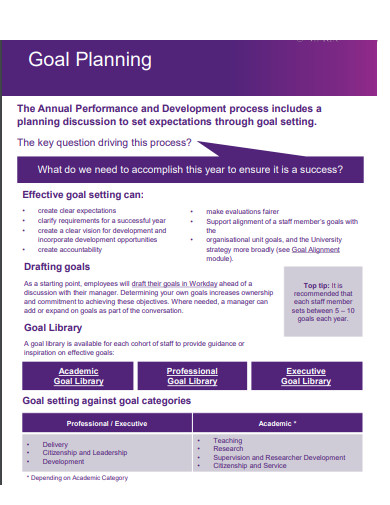
staff.uq.edu.au
13. Employee Realistic Smart Goal Example
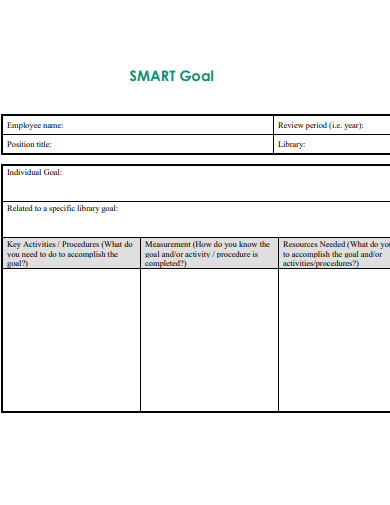
lirn.ca
14. Information Session Goal Example

hhs.texas.gov
15. Business Goal Example

smartsheet.com
16. Teacher Goal Example

cpb-ap-se2.wpmucdn.com
17. Communication Goal Example
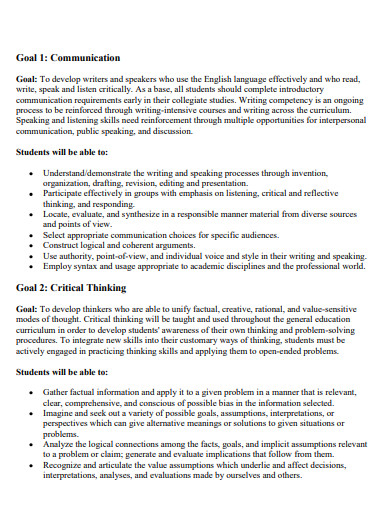
web.mnstate.edu
18. Measurable Goal Example
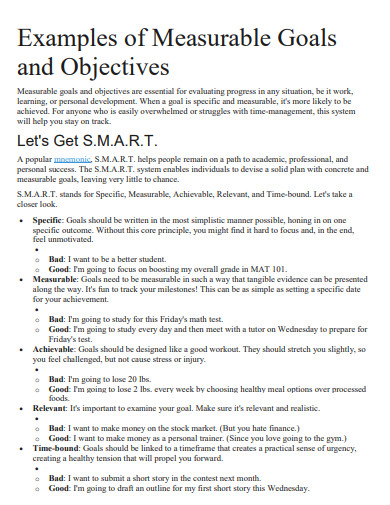
tntech.edu
19. Smart Goal Performance Objective Example
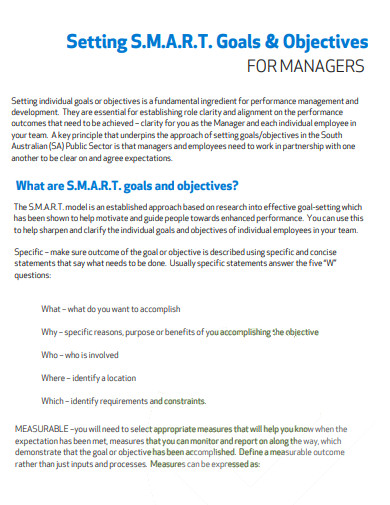
publicsector.sa.gov.au
20. Executive Assistant Smart Goal Example
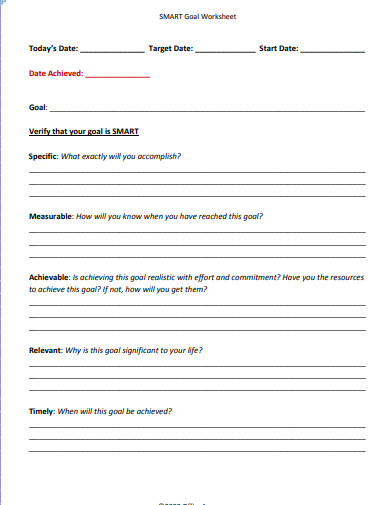
higherlogicdownload.s3.amazonaws.com
21. Learning Smart Goal Example

collegept.org
22. Smart Goal Action Plan Example
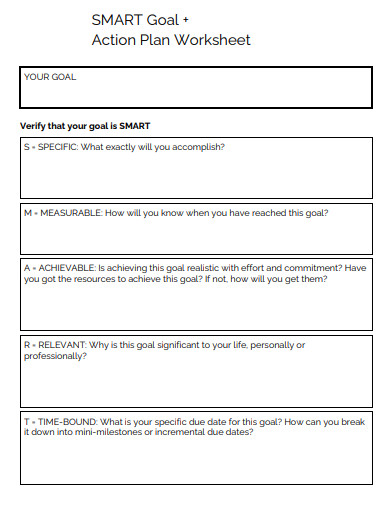
portal-media.cca.edu
23. Leadership Goal Example

highpoint.edu
24. Social workers Smart Goal Example
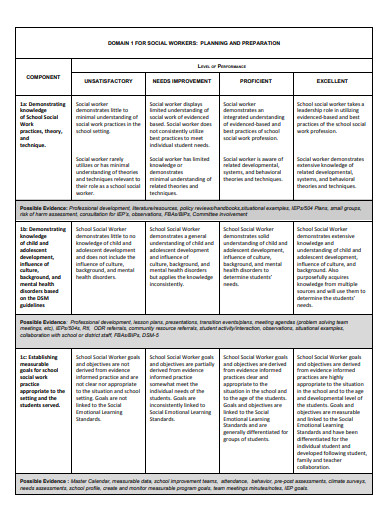
vvsd.org
25. Smart Goal Worksheet Example

lssu.edu
26. Project Management Smart Goal Example
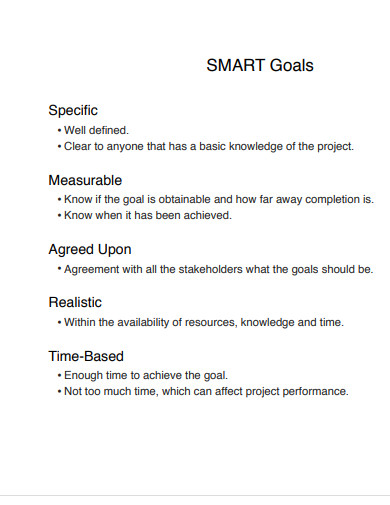
immagic.com
27. Basic Employee Smart Goal Example
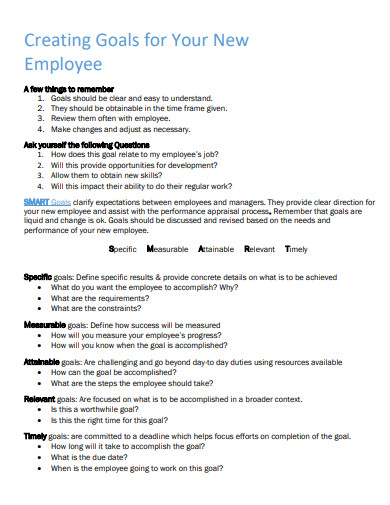
info.umkc.edu
28. Standard Employee Smart Goal Example
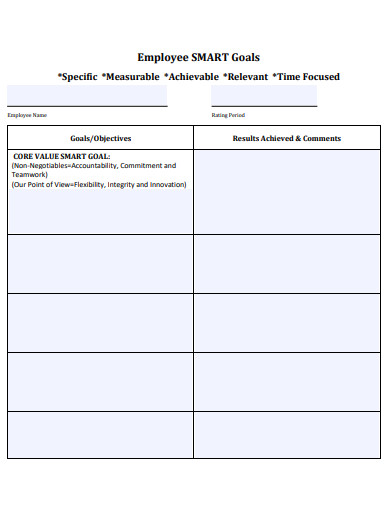
pinal.gov
29. Printable Employee Smart Goal Example
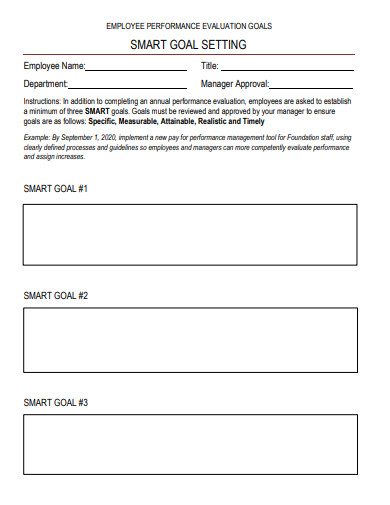
csudhfoundation.com
30. Free Employee Smart Goal Example
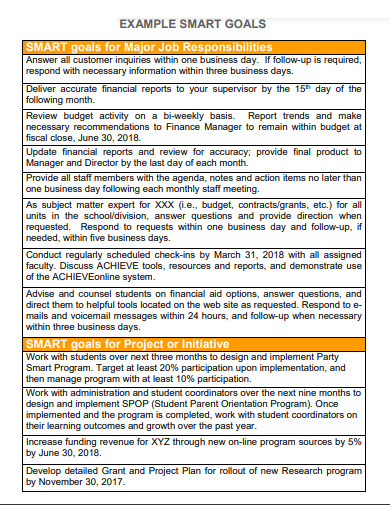
hr.uci.edu
What are SMART Goals for Work?
SMART is an acronym that encapsulates the key characteristics of an effective goal: Specific, Measurable, Achievable, Relevant, and Time-bound. Each component plays a vital role in transforming vague intentions into actionable objectives with tangible outcomes. By incorporating these elements, individuals and teams can align their efforts with organizational priorities, foster continuous improvement, and elevate performance.
How to craft your SMART Goals for Work
Embarking on the journey of setting SMART goals requires careful thought and planning. Here is a step-by-step guide to creating SMART goals that will steer you toward professional excellence:
Step 1: Clearly Define Your Objective
Begin by identifying the specific objective you aim to achieve. This could range from improving specific skills or addressing weaknesses to achieving long-term career goals. Clarity is paramount, as a well-defined objective forms the foundation of your SMART goal.
Step 2: Identify Your Strengths and Weaknesses
Conduct a thorough self-assessment to discern your strengths and weaknesses. This observation will enable you to leverage your strengths and address your weaknesses within the context of your goal.
Step 3: Establish Correlation with Career Goals
Ensure that your SMART goal aligns with your long-term career aspirations. The goal should contribute to your professional growth and bring you closer to realizing your overall vision.
Step 4: Break Down the Goal into SMART Criteria
- Specific: Clearly articulate what you intend to accomplish. Instead of a vague goal like “improve communication skills,” specify “enhance my presentation skills by attending communication workshops.”
- Measurable: Define the criteria for measuring progress and success. For example, “deliver two successful presentations by the end of the quarter.”
- Achievable: Set a realistic goal that stretches your capabilities without being unattainable. Factor in available resources and constraints.
- Relevant: Ensure that the goal aligns with your professional objectives and contributes to your personal growth.
- Time-bound: Establish a timeline for achieving your goal. For instance, “complete the required workshops and presentations within the next six months.”
FAQs
Can I set multiple SMART goals simultaneously?
Yes, you can set multiple SMART goals, but be mindful of your capacity to manage and prioritize them effectively. Overcommitting can dilute your focus and hinder progress.
What if circumstances change during my goal pursuit?
It’s important to remain adaptable. If unforeseen changes occur, revisit your SMART goal and adjust it as needed to reflect the current situation.
Should my SMART goal be limited to work-related objectives?
While SMART goals are often used in a professional context, they can be applied to various aspects of life. The key is to ensure that the goal is specific, measurable, achievable, relevant, and time-bound.
Setting SMART goals is a powerful strategy for driving your professional growth and achieving success in the workplace. By following the structured approach of defining specific objectives, aligning them with your strengths and weaknesses, correlating them with your career goals, and breaking them down into SMART criteria, you can chart a clear path toward advancement. As you embark on this journey, remember that the journey of a thousand miles begins with a single SMART step.


